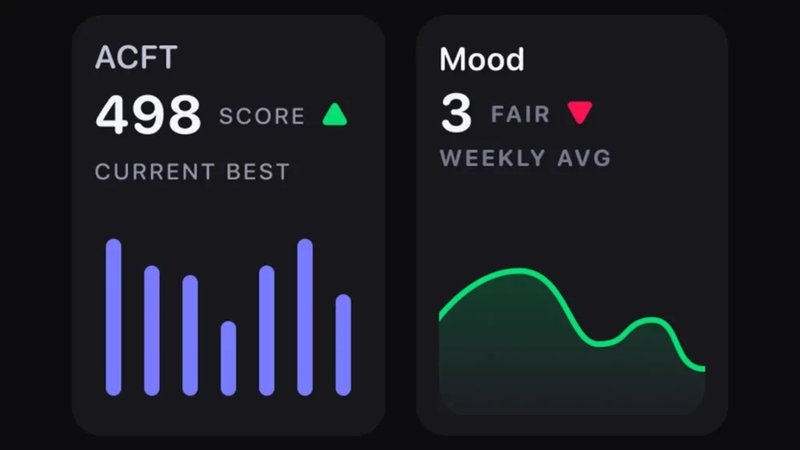Australia invests $1.4 billion in additional AMRAAM buy
Some of the missiles ordered can be used on the F/A-18F Super Hornet, EA-18G Growler and the F35-A Lightning.
Physical challenge event during an Army competition in Georgia. (Photo: US Army)
Warfighters from the US Army, Marine Corps (USMC) and Special Operations Command (USSOCOM) recently tested a wearable digital health and human performance software solution to individually measure service members’ health and enable them to improve their performance.
Named Lightning Platform, it is a cyber-secure and custom-built mobile app developed by the Center for Body Computing (CBC) at the USC Institute for Creative Technologies (ICT), in partnership with the US Army and the DoD.
It can connect to a variety of body-worn sensors including Apple Watch, glucose monitors and medical-grade wearable devices enabling the platform to detect, record and display real-time and highly accurate measurements of the soldier.
US Army to use virtual reality to train combat medics
How close are the US Armed Forces to having super soldiers within their ranks?
Aging infrastructure is endangering US military’s capacity to innovate
This plug-and-play solution was unveiled in 2022 and can evaluate physiology, metabolism and mental and cognitive status.
An official spokesperson for the USC ICT explained to Shephard that the Lightning Platform has been used by the Center for Body Computing to support several multi-year research studies.
“These [studies] will provide real-time holistic health measurements, including biomarkers detecting acute and chronic brain injury, towards creating a personal health record,” the official noted. “The overarching goal is to reduce and eliminate long-term adverse outcomes and optimise individual health and performance for service members.”
For that matter, the app also provides short-form original videos and other content modules developed by subject matter experts and informed by science-based guidelines.
Some of the areas it covers comprise physical training and recovery; psychological and cognitive fitness; sleep hygiene; metabolic health; and education related to treatment options.
The next phases of this effort will involve adding novel measures and transitioning the platform to the military for broad use in large-scale programmes such as the Army's Holistic Health and Fitness (H2F) system.

The H2F is a service’s attempt to empower and equip warfighters to take charge of their health, fitness and well-being to improve their individual performance while also preventing injury or disease.
It represents a shift from a “one-size-fits-all” model to an approach which acknowledges that every soldier is unique and that diverse units have different missions.
The Lightning Platform passed through trials in several units located in California since 2022. At the Comprehensive Operator Readiness Assessment (CORA 2.0), in Fort Bragg, 1st Reconnaissance Battalion, Camp Pendleton, it was tested by 200 members of the 3rd Special Forces Group (Airborne).
Also in Fort Bragg, 15 instructors of 1st Special Forces Command (Airborne) assessed the platform during the Special Forces Advanced Reconnaissance, Target Analysis and Exploitation Techniques Course (SFARTAETC).
Moreover, the app was deployed in a study conducted at the Marine Corps Base in Camp Pendleton, which involved 500 warfighters. Meanwhile, at the National Training Center Fort Irwin, it was used to monitor the health of 150 Brigade senior leaders.
Another test with the Lightning Platform was conducted in Hawaii at the Marine Corps Camp H. M. Smith, Oahu. It involved 350 senior service members of the Special Operations Command Pacific (SOCPAC).

Some of the missiles ordered can be used on the F/A-18F Super Hornet, EA-18G Growler and the F35-A Lightning.

Combat losses of support and logistics vehicles in recent conflicts have highlighted the need for greater protection and even self-defence capabilities. What options are available to turn a basic truck into a survivor on the battlefield?

More than 1,200 Dingo 1 and Dingo 2 models have been built and deployed by some 10 countries. The latest Dingo 3 pulls through from user inputs and, like earlier versions, is also based on a UNIMOG chassis.

The company’s new variants of 4×6 and 6×6 vehicles are designed to be modular for a greater variety of missions and also flexibility at a subsystem level, for example transmission and engine.

The branch plans to speed up the building and procurement of kinetic and non-kinetic systems for fixed, semi-fixed and on-the-move operations.

Wheeled vehicles ranging in size from 4×4 to 8×8 provide high-speed at a good level of mobility compared to tracked. However, tracked can be larger and have a higher level of mobility in marginal terrain with a smaller turning circle. What are the possibilities for a 10×10?